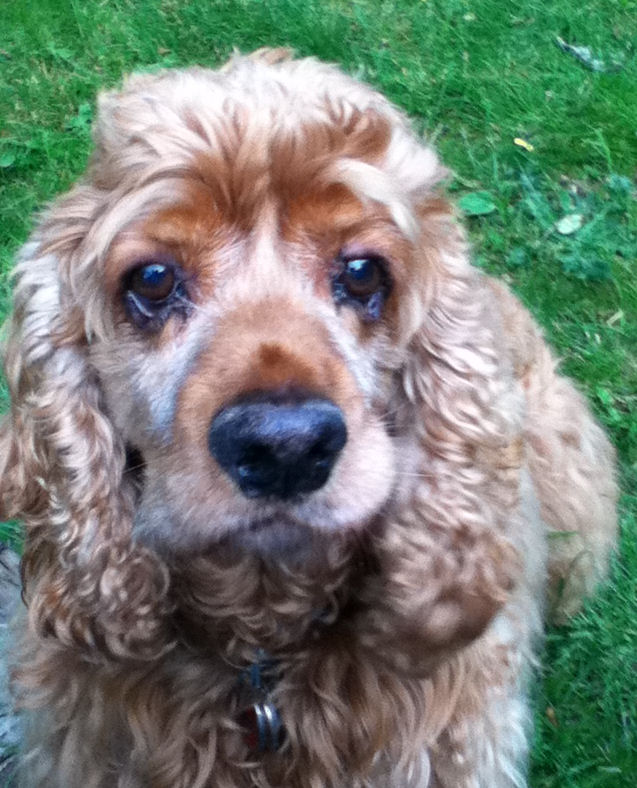
As with humans they are finding nutrition and mental stimulation play a huge role in preventing Canine Cognitive dysfunction. ( senility) A new study just came out with some really interesting solid results for the use of acupuncture ( evidence based) for alzheimer’s patients in humans.
The points will also work well for senior pets to ease doggie dementia and possibly to help prevent or slow it down. The controlled clinical investigation of human subjects measured multiple regions of disrupted connectivity in AD patients. After acupuncture, MRI imaging revealed that AD patients had significant improvements in connectivity for both frontal and lateral temporal regions of the hippocampus.
The researchers note, “Due to the cognitive impairment associated with AD, acupuncture on specific acupoints can modulate the cerebral blood flow and strengthen the hippocampal connectivity in AD patients.”
Acupressure or Acupuncture can do a lot to support brain function and cognitive response. There are several points and combinations of points that your practitioner can chose from. So if you have senior pet who seems a bit out of it or depressed, withdrawn or grumpy take them to your vet and get them checked soon. Then think about adding a little TCM to your seniors routine.
Canine Cognitive Dysfunction (Senility in Dogs) Pet owners frequently complain of age related problems with their older pets. Common complaints are house training issues, memory loss, confusion, disorientation, panting, drooling, wandering, night pacing and other sleep disturbances , obsessive licking and other conditions.
These behaviours usually start gradually and many times owners do not notice them until they are quite severe. How common is this syndrome? Approximately 30 % of all 11 year old dogs have this condition and 100% of all 16 year old dogs are affected.
Studies have shown that dogs affected with this condition have amyloid protein deposits in their brains just like those found in the brains of humans with Alzheimer’s Disease. Cognitive dysfunction is also associated with low levels of dopamine –a neurotransmitter– in the brain.
Treatments for Canine Cognitive Dysfunction can include medications, herbals, dietary changes and modification of the environment. Conventional practitioners will often reach for L-Deprenyl or Anipryl to help these pets. L-Deprenyl reduces the free radicals in the brain and helps the dopamine to stay around longer.
This is effective in about 70% of dogs and the earlier it is started the better. Melatonin can be used for sleep or anxiety disorders in this syndrome. I like this because it is a liquid and easy to give to the dog. It has vegetable glycerin base and so is safe for pets. The dose is 1 ml in the evening. L theanine is another natural product that can be used. It should be available from your local health food store. 100 to 200 mg is the dose depending on dog size. Chinese herbal therapies and acupuncture can also be quite helpful. You would of course need to seek out a veterinary acupuncturist.
Dietary supplements with Omega 3 Fatty Acids, Vitamin E, Coenzyme Q 10 and antioxidant vitamins are also recommended. A good, balanced,natural diet, homemade or otherwise is essential. Adding colourful fruits and vegetables, if your dog can tolerate them, is very important.
https://www.cnn.com/2022/08/26/health/doggie-dementia-wellness/index.html
Environmental enrichment has been shown to help these dogs as well. Grooming and petting, teaching new tricks, varying routes during walks, playing with toys and playing with other dogs are all things you can do to help improve your old dog’s life. In fact diet changes and enrichment are the two most effective tools in the treatment of canine cognitive dysfunction, more effective than any medication, so a recent study has shown. By doing some of these simple things you can help your dog learn to manage his old age.
Be sure to contact your veterinarian if you are concerned about this problem in your older dog. Here are the points used in the study that help break down amyloid proteins in the brain and increase cerebral blood flow .
Happy pointing
GV20 dorsal midline between the ears there is usually a bump where the point is GV14 dorsal midline between the last cervical and first thoracic vertebrae
LI4 front paws between the first and second metacarpal bone at the webbing of the dew claw
LIV3 on the back paws where the inside big toe meets the paw between the 2nd and 3rd metatarsal balances
BL23 1.5 cun lateral to the caudal border of the spinous process of the second lumbar vertebrae or find the last rib and follow it straight up about 1.5 cun off the spine
